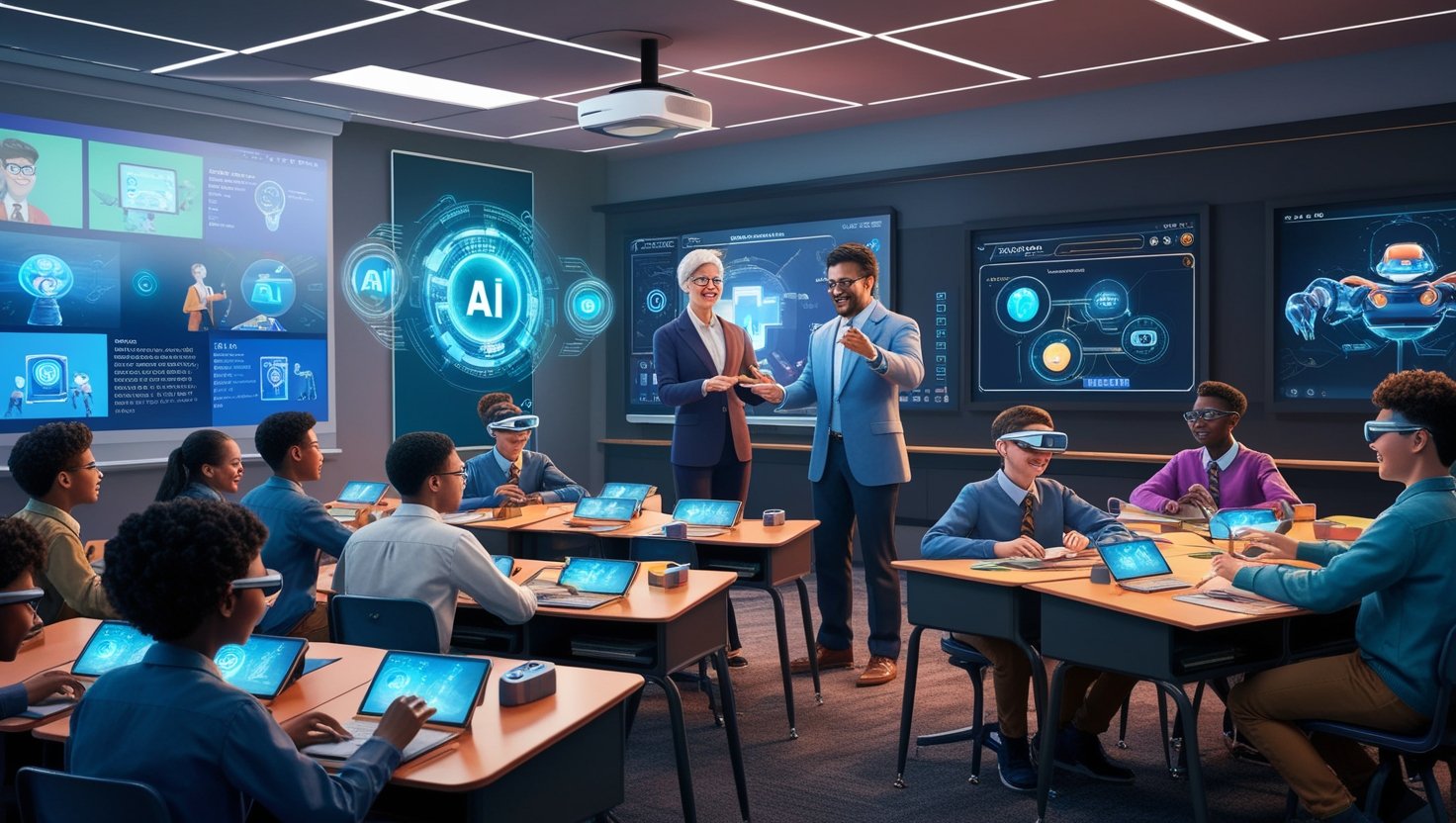This falls under one of the most recent technological advances that have revolutionized the faces of many industries, especially education. Artificial Intelligence with steady growth and development brings a set of innovations changing the traditional experience of education, making it more personalized, efficient, and engaging. In this article, we talk about how artificial intelligence is bringing forth a new future in learning and how to best utilize these new technologies within education for effective teaching and better learning environments to educators, learners, and academies.
1. Personalized Learning: Tailoring Education to Individual Needs
The most significant impact of AI on education would be the generation of a more personalized learning experience. For example, the AI tool will make it possible for educators to make lessons and other resources specific to the needs, strengths, and weaknesses of individual students. For example, intelligent tutoring systems utilize machine learning algorithms to judge the performance of the student and then make real-time decisions about giving instant feedback by changing the levels of difficulty needed for the tasks.
In addition, AI can help identify learning patterns and gaps, which allows educators to proactively address challenges before they become obstacles. This approach helps students learn at their own pace boosting motivation and getting them engaged with material always.
2. AI-Powered Assistants: Enhancing Teacher-Student Interactions
The virtual assistant, with the power of AI, is revolutionizing the relationship between students and teachers. Virtual assistants can explain a student’s question, clarify an apparently tough topic, even help in grading and scheduling and many other things.
So, through the automation of routine work, AI enables teachers to spend more time on more meaningful interactions with the students to build intimacy and drive excellent outcomes in education.
For instance, AI chatbots can help students with frequently asked questions on homework, exams, or assignments, thus freeing up more time for teachers to give individualized instruction. Moreover, these AI tools can be available 24/7, providing constant support and guidance to students.
3. Real-Time Analytics: Tracking Student Progress and Performance
Such an approach allows educators to track students’ weaknesses and modify their teaching techniques.
Real-time analytics also enable an educator to capture trends and patterns that can come in handy with regard to the curriculum, as well as evaluation techniques and instruction approaches. An educator can, for the first time, be ensured that AI technology guarantees each of their students similar attention and all resources required to be educated efficaciously.
4. Adaptive Learning Systems: Revolutionizing Curriculum Delivery
Through AI, it is possible to develop adaptive learning systems that will customize itself according to the needs of a particular student. The AI algorithms assess how students behave and perform, therefore modifying content in response to the needs and abilities of each learner.
For example, DreamBox and Knewton are using adaptive learning technology to deliver personalized math and reading instruction that adjusts the difficulty of questions based on how well a student is performing. This means that students are always challenged but not overwhelmed, creating a more effective and enjoyable learning experience.
5. AI and Virtual Reality (VR): Creating Immersive Learning Environments
The most exciting potential in AI in education is possibly the fusion between AI and VR. When linked, the capacities of analyzing and data-driven logic in AI unite with the sensory experience that happens through VR technology. It leaves one with myriad possibilities in providing immersive learning situations for students. Safe, controlled exposure to real scenarios through AI-led VR environments enhances skill practice with precision.
For example, medical students would be able to practice surgeries inside VR simulations, and history students would be taken to the eras and cultures they would be learning through virtual tours; this way of experience may provide a better understanding as well as promote higher engagement and knowledge retention.
6. Automate Administrative Tasks for Streamlining the Educational Institution
AI is transforming the way education is conducted not only in classrooms but also administrative processes in institutions. From grading systems to admission processes, AI minimizes the workload on staff so that they can focus on other important tasks.
For example, AI automatically grades assignments and exams allows immediate feedback to the students, and releases the precious time of a teacher to undertake more aspects of instruction. Moreover, AI-based tools assist one in scheduling, and attendance tracking in case of a student, even the course recommendation helps, ensuring that there is an unproblematic and efficient execution.
7. AI in Assessments: Beyond Traditional Testing
The traditional testing methods can hardly measure the understanding of the student on the subject matter being taught and is to be tested with a higher degree of accuracy. AI changes this by setting up more comprehensive and dynamic testing methods. From multiple-choice types of questions only, AI extends assessments to using simulations, projects, and interactive-type tasks that, in turn, give a detailed view of abilities.
AI can also eliminate biases in assessment by evaluating the work of students based on objective data rather than subjective interpretation. This leads to fairer and more accurate assessments, which, in turn, benefits the students and ensures a more equitable learning experience.
Conclusion
As it advances, place in education would be enhanced further to open doors for new approaches in learning through personalization of learning, more interaction between student and teacher, and more institutional efficiency. By maximizing AI power, educators will be able to create a more engaging, effective, and inclusive learning environment for all students. While problems are still present, the destiny of education cannot be separated from AI, and the potential for this to change the educational landscape is immense. The use of AI in learning is no choice but a passage to an exciting, more innovative future for the learners worldwide.



